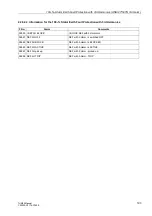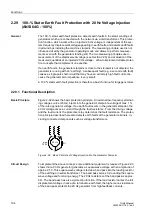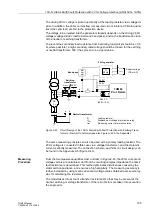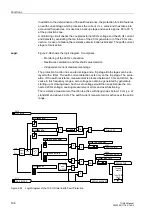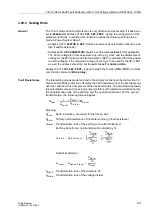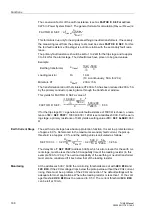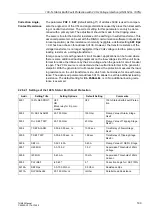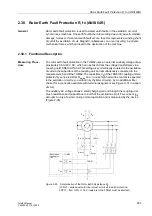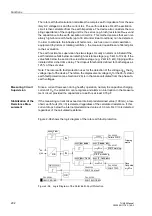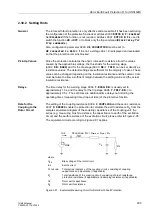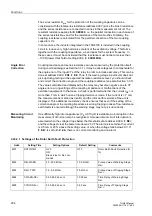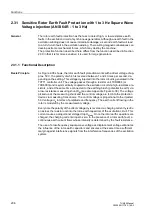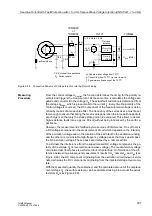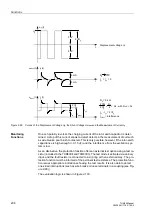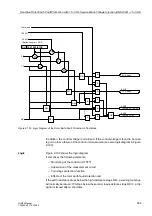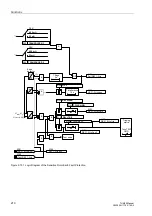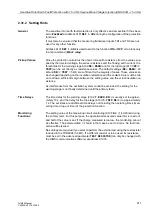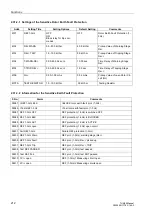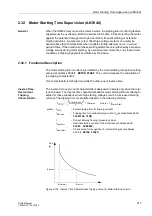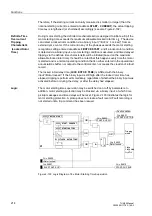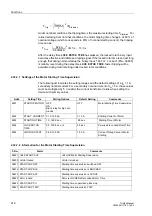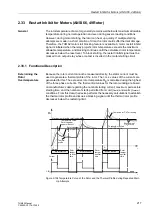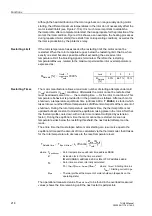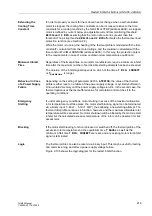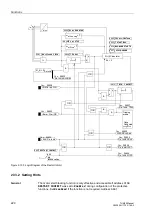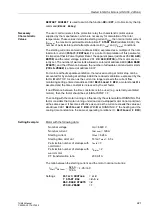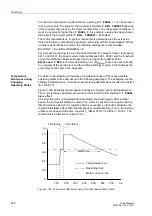
Sensitive Rotor Earth Fault Protection with 1 to 3 Hz Square Wave Voltage Injection (ANSI 64R - 1 to 3 Hz)
207
7UM62 Manual
C53000-G1176-C149-3
Figure 2-98
Connection Scheme of Voltage Injection into the Rotor Winding
Measuring
Procedure
From the control voltage U
Control
, the function determines the timing for the polarity re-
versals and triggers the measurement. At the same time it calculates the voltage am-
plitude and converts it to the voltage U
g
. The actual fault resistance is determined from
the voltage U
Meas
, which is proportional to the current I
g
. Every time the polarity of the
control voltage is reversed, the DC component of the measurement voltage is deter-
mined by means of a mean value filter. The frequency of the series device must be set
low enough to ensure that during the mean-value generation the rotor-earth capacitors
are charged, so that only the steady-state portion is evaluated. This allows to detect
high-resistance faults (max. approx. 80 k
Ω
) without being influenced by the earth ca-
pacitance.
However, the measurement is falsified by two sources of interference. One of them is
a DC voltage component in the measurement circuit which depends on the intensity
of the excitation voltage and on the location of the earth fault in the excitation winding,
and the other are considerable high-frequency voltage peaks that may superimpose
the DC excitation voltage. These peaks are damped by a numerical filter.
To eliminate the interference from the superimposed DC voltage component, the po-
larity of the voltage U
g
is reversed (square-wave voltage). The measurement voltage
calculation described above is performed for both polarities. On formation of the dif-
ference between two subsequent measurement results for I
g
, namely I
g1
and I
g2
(see
Figure 2-99), the DC component originating from the excitation circuit (I
offset
) is elimi-
nated, whereas the DC components originating from the injected voltage U
g
accumu-
late.
With the measured quantity thus obtained, and the calculated amount of the displace-
ment voltage U
g
, the earth resistance can be calculated, taking into account the series
resistors R
s
(see Figure 2-99).
CE/2
CE/2
Fault resistance
40 k
Ω
40 k
Ω
lg (t)
U
g
(t)
+/-50 V
U
Meas
/l
g
= 375
Ω
Galvanic
isolation
U
Control
= 1/6
U
Control
(MU1)
U
Meas
(MU2)
7XR6003
or
7XR6004
7XT71
7UM62x
CE: Rotor-earth capacitance
R
S
: Series resistor
l
g
(t)
R
S
R
S
f
g
: 0.5 Hz to 4.0 Hz
U
g
: Square-wave voltage from 7XT71
I
g
: Current flow from 7XT71 via rotor to earth
f
g
: Square-wave frequency of the 7XT71
/U
g

